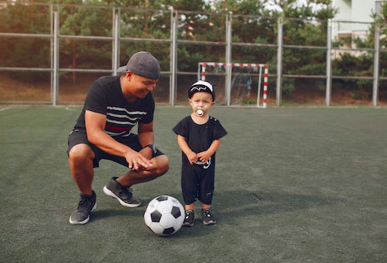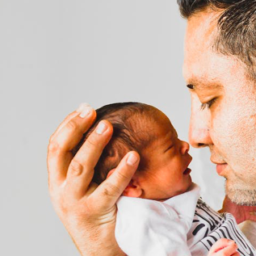How severe is discrimination against males and what are the unique disadvantages that males suffer? When it concerns boys and young men, it took three-quarters of the 967-page book I wrote, Nurturing and Empowering Our Sons to address the problem of these “primal wounds” and risks in full. It took the remaining 25% of the book to recommend ways to remediate the problem, especially in hopes of halting the epidemics of male child abuse, psychiatric drugging of male youths, and male youth suicide. I have found that many forms of discrimination against boys and young men and the disadvantages that they face are overlooked by even the strongest child advocates and male advocates. Here, based on my professional experience with children, youths, and families, I condense the scope of the problem into a five-article series that necessarily also includes the middle-aged and geriatric men that our young males will become.
Let’s continue with the next stages of a male’s life: Early childhood (0-8) and pre-adolescence (ages 9-12). Some forms of discrimination and disadvantage will be repeated, as they continue to negatively affect males at different developmental stages of life.
Early Childhood and the Pre-Teen Years
How boys are parented
- Boys receive less physical affection and emotional nurturance from parents than girls
- Boys receive less comfort, less validation, and less help with feeling and being present with their emotions than girls
- Boys receive more shaming by their parents for their emotions and behavior and about their bodies and bodily functions than girls
- Parents use less emotion-related words with sons than with daughters
- Parents withdraw physically and emotionally from sons at a younger age than from daughters
- Boys are more likely than girls to experience punitive, authoritarian parenting at home rather than authoritative parenting
- Boys are more likely than girls to suffer corporal punishment and other forms of physical abuse in the home
- Boys are more likely than girls to suffer severe child abuse and neglect in the home
- Boys may be missing a parent due to alienation, abandonment, or withdrawal, with the stereotype being that boys don’t need their mothers past a certain age and that mothers can easily raise a boy without his father
- Boys receive less grief support at home than their sisters when mourning the loss or death of a parent, grandparent, family member, sibling, birthparent, birthfamily member, friend, or other loved ones
Bodily integrity and body image
- Boys may begin to act-out behaviorally and show the attachment and psychological harm done to them by circumcision (Male Genital Mutilation)
- Symptoms include: Anger at the mother and women, mother-son attachment disruption, Autism Spectrum Disorder, alexithymia, anger and rage meltdowns, preoccupation with “potty humor” and penis displaying, fear of the doctor or of medical procedures, low or high pain threshold, self-harming behaviors, sexualized acting-out, and self-hatred
- Parents might be unaware of gradual narrowing of the urethral opening
- The World Health Organization actively pushes and advocates for Male Genital Mutilation even as it calls for the abolishment of Female Genital Mutilation
- Boys suffer shaming of their anatomy and bodily functions by how mothers, fathers, and caregivers react to cleaning, diaper changes, toilet learning, masturbation, and “potty talk”
- Boys are reflexively divested of their hair; routine buzzcuts and short crops are given to boys, reducing their beauty, individuality, and sensory reach. On the flip side, girls are told to celebrate themselves and parents invest money into routinely maintaining a girl’s grown-out hair
- Boys may face discipline in school in some states if they grow out their hair or have long hair
- Clothing for boys is less beautiful than that for girls, there is less of a selection of boys’ clothing than girls’ clothing, and the clothing sections for boys are remarkably smaller than for girls.
- Boys are rarely complimented on their beauty by their parents and family members past toddlerhood
- Boys are called “handsome” while girls are called “beautiful”; boys understand that “beautiful” is better than “handsome”
- Boys who value the arts and beauty and boys prone to gender dysphoria might believe that to be considered beautiful, they must become girls
- Today’s boys’ male human action figures are “ripped” with muscles that are unrealistic and larger than action figures of the 1970s and 1980s, which contributes to poor body image
- Today’s boys’ Halloween costumes actually have large foam arm, chest, and ab muscles built into the costume, which can contribute to poor body image
Education and daycare
- Parents of boys are more likely to align with the teacher’s criticisms and punishments against their sons than parents of girls
- Boys are excluded from STEM programs that are specific to girls with no counterpart for boys
- Boys are treated, to quote author, Michael G. Thompson, “like defective girls” in school academically and behaviorally
- Boys are more likely than girls to be disliked by school teachers
- Boys are given lower grades in school than girls in all subjects, including STEM
- Girls out-perform boys in all grade levels of school
- Daycare and public school are developmentally hostile and inappropriate for boys at all ages and stages, devoid of kinesthetic learning and physical activity
- Boy’s exuberant, spirited, and rough-and-tumble behavior at daycare, at school, and in the community is constantly pruned and considered problematic
- Boys are more likely than girls to suffer punishment at school
- Boys are more likely than girls to be subjected to behavioral modification (BMOD) and Applied Behavioral Analysis (ABA) at school
- Boys are more likely than girls to suffer corporal punishment and other forms of physical abuse in school by teachers, principals, and support staff
- More boys than girls are coded as or are receiving services at school for emotional, behavioral, and developmental disabilities
- At epidemic levels, boys are more likely than girls to be referred by the school for an Attention Deficit Hyperactivity Disorder (ADHD) diagnosis
Behavioral and mental health
- Boys are expected to stifle their urges to cry, weep, and express sadness; tantrums, angry outbursts, and numbness may become their primary outlets for grief and sadness
- More boys suffer bullying and community violence than girls
- More boys than girls suffer child abuse and neglect in all settings
- At epidemic levels, boys are more likely than girls to be diagnosed with Attention Deficit Hyperactivity Disorder (ADHD), Oppositional Defiant Disorder, and other behavioral diagnoses
- Boys’ behavioral and emotional symptoms are less likely than girls’ symptoms to be diagnosed with a trauma and stressor-related disorder or seen as signs that the school environment is developmentally inappropriate
- Symptoms of trauma and abuse in boys are often missed, as trauma is often judged by symptoms typically exhibited by girls
- At epidemic levels, boys are more likely than girls to be prescribed a psychotropic drug
- Boys are more likely than girls to be prescribed a cocktail of psychotropic drugs
- The American Psychological Association believes that boys and young men who present for mental health services should be taught that masculinity is “toxic”; mental health professionals are encouraged to look at young males through this lens
Health and developmental wellbeing
- Boys are suffering deleterious hormonal effects from the soy in the food source introduced in 2000, and this can contribute to boys starting puberty a year or more earlier than is natural, to having accelerated puberty, or to boys struggling with gender identity
- Boys are suffering deleterious health and medical effects from the soy in the food source introduced in 2000, and this can contribute to obesity, gynecomastia, and feminized body shape
- Boys are suffering deleterious effects from the American diet, especially of refined sugar, including obesity, autoimmune diseases, dental cavities, low energy, and weak muscles
- Boys are suffering deleterious effects from today’s video games that target young males and are engineered for behavioral addiction.
- These effects include: Sedentary behavior, behavioral addiction, weak bodies, muscular-skeletal pain, neurological problems, optical problems, social skill deficits, and loss of developmentally necessary dramatic play
- Today’s video games that target young males and are engineered for behavioral addiction expose boys to in-game and in-app bullying, porn, sextortion, and sexual predators
Sexual abuse
- While genital mutilation, rape, and sexual abuse of boys has been rampant throughout history and in nearly all cultures around the world, the topic has been taboo and ignored while the same abuses against girls are historically highlighted and acknowledged
- Boys are the neglected victims of sexual abuse and sexual assault, with most awareness campaigns, assessments, victim services, and treatments being focused on female victims of male perpetrators
- Sexually abused boys are considered “lucky”, more culpable, less innocent, and less harmed by sexual exploitation, sexual assault, and rape by females than if the sexes were reversed
- Sexual abuse cases involving boys are less likely than sexual abuse cases involving girls to be referred to child abuse assessment centers
- Sexual abuse cases involving boys are less likely than sexual abuse cases involving girls to be referred to the District Attorney’s office for prosecution
- Sexually abused boys have poorer legal outcomes than sexually abused girls
- Non-profits that receive funding refuse to update the decades-out-of-date “1 in 6 boys” vs. “1 in 4 girls” are sexually abused statistic in spite of the following:
- Research has shown that boys are equally vulnerable to sexual abuse
- Empirical research indicates that boys are at least 50% of sexual abuse victims
- Research confirms that boys are less likely than girls to report their abuse to authorities, so any institutional numbers of male victims are likely a fraction of actual victims
- State and federal agencies uncovering mass pedophile scandals involving boy victims
Community support
- Scouting and social support programs specifically for boys have gone co-ed, including Boy Scouts of America, Boys Town USA, and Boys Club; meanwhile programs specifically for girls only multiply
- There are hundreds of federal, state, private, non-profit, philanthropic, and grassroots programs to empower and enrich girls with no counterparts for boys
- There is no “Boy Power” slogan on kids’ clothing and accessories as a counterpart to “Girl Power”
- Efforts to protect boys from child abuse, sexual assault, and bullying are generalized to “helping kids”, and are often based on a model of how girls are vulnerable to these forms of violence
- Child protective services are more likely to “screen out” and rule out reports of child abuse when a boy over 8 is the alleged victim
- The United Nations has a vast global financial, programmatic, and ideological infrastructure to support the human rights of girls and women with no counterparts for boys and men
Foster care and adoption
- Boys in the foster care system are more likely than girls to be medicated with psychotropic drugs
- More boys than girls are living in residential facilities and group homes
- Boys in the foster care system wait longer than girls to be adopted
- Boys ages eight and older in the foster care system are considered “difficult to place” and may qualify as special needs placements solely due to their sex
Exposure to misandrist ideology
- Feminist ideology and Critical Theory are taught to children as young as preschool age and intensifies as boys move up the grade levels; these ideologies teach children that males are oppressors and females are oppressed, that masculinity is “toxic”, that it is bad to be a biological boy, and that boys have privilege and therefore cannot be victims of sexism
- Pop culture is still reeling from the “Boys are stupid, throw rocks at them” children’s clothing, accessories, books, and poster line by the David and Goliath Company that was all the rage in the early ‘00s
- Boys are saturated by media with dehumanizing messages that girls are smart and boys are stupid, girls are good and boys are bad, a girl’s body is beautiful and a boy’s body is gross, and that males are responsible for social ills
- Boys are bombard by media that:
- Dehumanizes males
- Objectifies the male body for sex, violence, comedy, and utility
- Uses slapstick, abuse, hurting, and beating up of males as comedy
- Shows genital kicks and facial slaps of males by females as justified and deserved
- Presents maleness as toxic
- Presents males as buffoons, ugly, stupid, incompetent, gross, and disposable
- Shames male sexuality
- Presents males as only good enough for being used by females
Advocacy
- Parents are less likely to speak up to their sons about misandry that they encounter in the media and in public than to their daughters about misogyny that they encounter
- Parents are less likely to speak out at school, in healthcare, or in other settings against direct sexism against their sons than against their daughters
Mortality
- More boys die of cancer than girls
- More boys die of fatal child abuse than girls
- More boys die of suicide than girls
- More boys die of homicide and gun violence than girls
References:
Couture, L. A. (2023). Nurturing and Empowering Our Sons: Healing the Wounds of an Anti-Boy Culture by Parenting and Educating the Way Nature Intended. Seacoast Press/MindStir Media. https://laurieacouture.com/products/
Note: Most of the references and statistics for discrimination against boys and young men can be found in my book or they are observations based upon my decades of clinical, educational, social services, and juvenile justice work with children, youths, and families. However, if there is a specific reference or statistic that you are seeking that is not in my book and you cannot find it via Google Scholar or other academic research site, please contact me through The Boys Initiative at: https://boysinitiative.org/contact-us/
Feedback on this or other articles? Let us know at: editor-in-chief@mensenews.org





